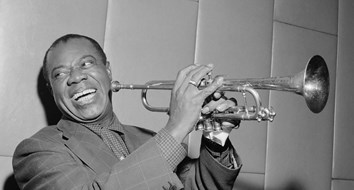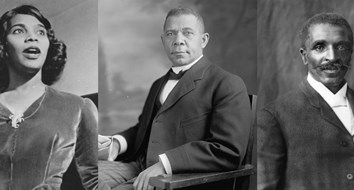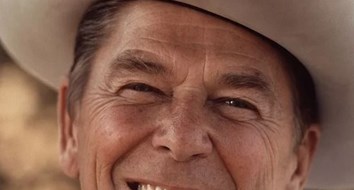Download:
Click here to watch a video lecture of this essay.
As a former university professor, I read thousands of student-authored essays through the years—sometimes joyously, but probably just as often, painfully. Occasionally, the process of researching and writing exerted significant influence over a student’s future interests, thinking, and perhaps even behavior. But of all the student essays ever written anywhere, I doubt that any had as profound an effect on its author and the world as one penned 220 years ago at Cambridge.
Throughout Britain the annual Latin essay contest at Cambridge was known and the honor of winning it coveted. The topic for the 1785 competition was prompted by a horrific human tragedy a few years before: Near the end of a long voyage from Britain to Africa to the West Indies, the captain of the British slave ship Zong had ordered his crew to throw 133 chained black Africans overboard to their deaths. He reckoned that by falsely claiming the ship had run out of fresh water, he could collect more for the “cargo” from the ship’s insurer than he could fetch at a slave auction in Jamaica.
No one in the Zong affair was prosecuted for murder. A London court ruled the matter a mere civil dispute between an insurance firm and a client. As for the Africans, the judge declared their drowning was “just as if horses were killed,” which, as horrendous as that sounds today, was not a view far removed from the conventional wisdom that prevailed worldwide in 1785. Slavery, after all, was an ancient institution. Even to this day, people who have walked this earth in bondage far outnumber those who have enjoyed even a modest measure of liberty.
Moved by the fate of the Zong’s victims and the indifference of the court, the university vice-chancellor in charge of selecting the topic for the 1785 contest at Cambridge chose this question: “Anne liceat invitos in servitutem dare?—Is it lawful to make slaves of others against their will?”
Enter a man who, with a handful of compatriots armed only with the printed and spoken word, would clutch the public by the neck and not let go until it consigned slavery to the moral ash heap of history.
Born in the English town of Wisbech in 1760, Thomas Clarkson was a 25-year-old Cambridge student who hoped to be a minister when he decided to try his luck in the essay contest. Slavery was not a topic that had previously interested him, but he plunged into his research with the vigor and meticulous care that, with the passion that his findings later sparked, would come to characterize nearly every day of his next 61 years. Drawing from the vivid testimony of those who had seen the unspeakable cruelty of the slave trade firsthand, Clarkson’s essay won first prize.
What Clarkson had learned wrenched him to his very core. Shortly after claiming the prize, and while riding horseback along a country road, his conscience gripped him. Slavery, he later wrote, “wholly engrossed” his thoughts. He could not complete the ride without making frequent stops to dismount and walk, tortured by the awful visions of the traffic in human lives. At one point, falling to the ground in anguish, he determined that if what he had written in his essay was indeed true, it could lead to only one conclusion: “it was time some person should see these calamities to their end.”
Adam Hochschild, author of a splendid recent book on the history of the campaign to end slavery in the British empire titled Bury the Chains, explains the significance of those few minutes in time: “If there is a single moment at which the antislavery movement became inevitable, it was the day in 1785 when Thomas Clarkson sat down by the side of the road at Wades Mill . . . . For his Bible-conscious colleagues, it held echoes of Saul’s conversion on the road to Damascus. For us today, it is a landmark on the long, tortuous path to the modern conception of universal human rights.” More than two centuries on, that very spot not far from London is marked by an obelisk.
No man can rightfully lay claim, moral or otherwise, to owning another. That became Clarkson’s all-consuming focus. Casting aside his plans for a career as a man of the cloth, he mounted a bully pulpit and risked everything for the single cause of ending the evil of slavery. At first, he sought out and befriended the one group—the Quakers—who had already gone on record on the issue. But the Quakers were few in number and were written off by British society as a fringe element. Clarkson knew that antislavery would have to become a mainstream, fashionable, grassroots, educational effort if it had any hope to succeed.
On May 22, 1787, Clarkson’s organizational skills brought together 12 men, including a few of the leading Quakers, at a London print shop to plot the course. This tiny group, which named itself the Committee for the Abolition of the African Slave Trade, was about to take on a firmly established institution in which a great deal of money was made and on which considerable political power depended. The broad public knew little about the details of slavery and what it did know, it had accepted for the most part as perfectly normal since time immemorial.
Point Man in Parliament
William Wilberforce is most often given the lion’s share of the credit for ending slavery in the British empire. He was the long-time Parliamentarian who never gave in to overwhelming odds, introducing bill after bill to abolish first the trade in slaves and later, slavery itself. Hero he certainly was, but it was Thomas Clarkson who played an important role in persuading Wilberforce to be the movement’s man in Parliament. And it was information Clarkson gathered by crisscrossing 35,000 miles of British countryside on horseback that Wilberforce often used in parliamentary debate. Clarkson was the mobilizer, the energizer, the barn-burner, the fact-finder, and the very conscience of the movement.
He translated his prize-winning essay from Latin into English and supervised its distribution by the tens of thousands. He gave lectures and sermons. He wrote articles and at least one book. He helped British seamen escape from the slave-carrying ships they were pressed against their will to serve on. He filed murder charges in courts to draw attention to the actions of fiendish slave-ship captains. He convinced witnesses to speak. He gathered testimony, rustled up petition signatures by the thousands, and smuggled evidence from under the very noses of his adversaries. His life was threatened many times, and once, surrounded by an angry mob, he nearly lost it. The long hours, the often thankless and seemingly fruitless forays to uncover evidence, the risks and the costs that came in every form, the many low points when it looked like the world was against him—all of that went on and on year after year. None of it ever made so much as a perceptible dent in Thomas Clarkson’s drive.
When Britain went to war with France in 1793, Clarkson and his committee saw early progress in winning converts evaporate. The opposition in Parliament argued that abandoning the slave trade would only hand a lucrative business to a mortal enemy. And the public saw winning the war as more important than freeing people of another color from another continent. But Clarkson did not relent. He, Wilberforce, and the committee Clarkson had formed kept spreading the message and looked for the best opportunities to press it forward.
The effort finally paid off. The tide of public opinion swung firmly to the abolitionists. The trade in slaves was outlawed by act of Parliament when it approved one of Wilberforce’s bills in 1807. Twenty-six more years of laborious effort by Clarkson, Wilberforce, and others were required before, in 1833, Britain freed all slaves within its realm and became a model for peaceful emancipation everywhere.
Clarkson died at 86, having outlived the other 11 he had called together at the print shop back in 1787. Hochschild tells us that the throngs of mourners “included many Quakers, and the men among them made an almost unprecedented departure from sacred custom” by removing their hats.





